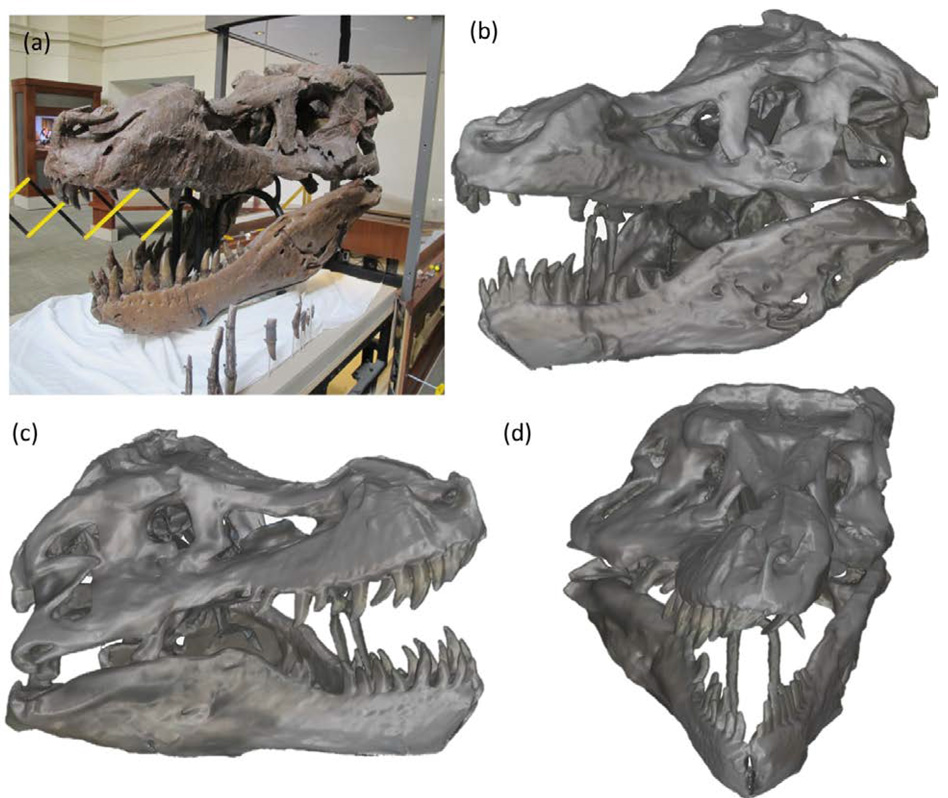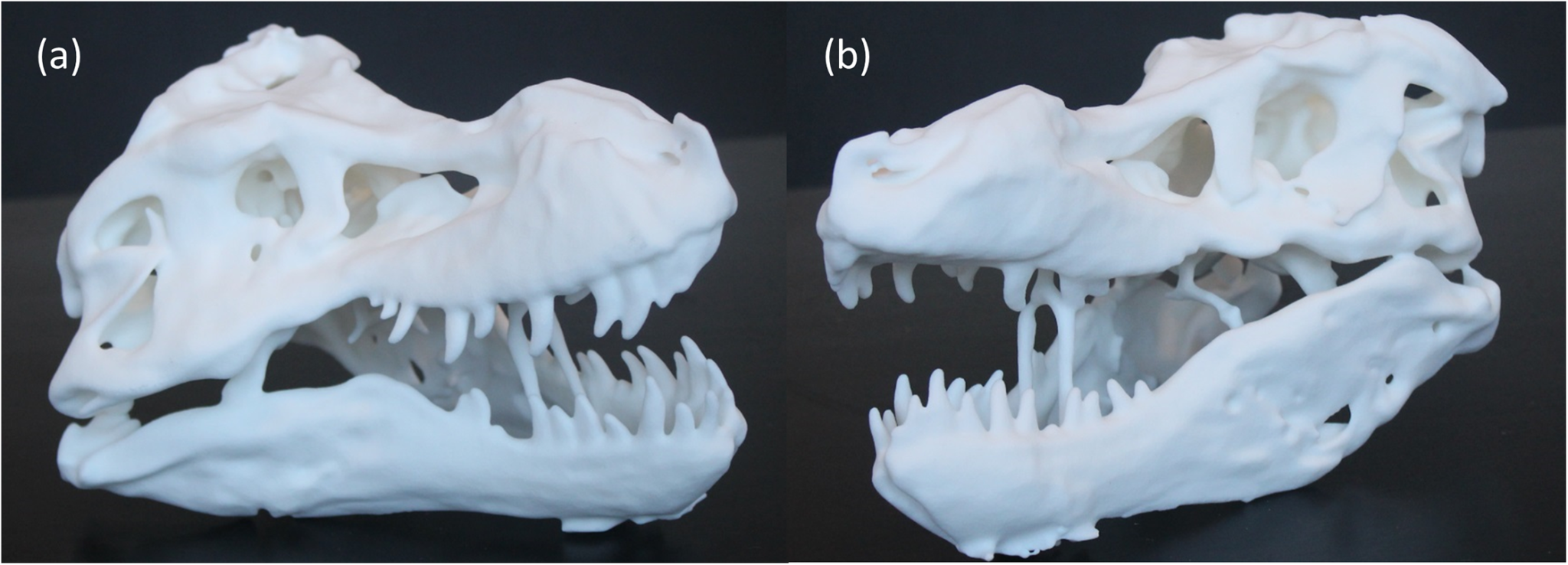Researches from MIT have used a Kinect scanner to immortalize the famous T. rex fossil displayed in Chicago’s Field Museum. Known as Sue, the enormous skeleton’s jaw was found to be too large for a team of forensic dentists’ dental scanners to analyze and so contacted MIT’s Camera Culture group to develop a new scanning system with the Kinect.
Sue is the largest, most complete and most extensive Tyrannosaurus rex ever found. Discovered by namesake Sue Hendrickson in 1990, the skeleton has been the subject of much debate for its peculiar holes in the jaw. Yet there has been no concrete determination to what caused the unusual markings. By 3D scanning Sue’s jaw, the forensic dentists hope to finally lay the bare bones.
The paper which combined two MIT researchers and two forensic dentists has been published in PLOS ONE, the peer-reviewed open access journal.

A bone to pick
Originally it was believed the holes were a result of a bite from another dinosaur but this was refuted by others with the belief they were the result of a protozoal infection. However, the research’s 3D scans may suggest neither of these hypotheses are correct. MIT News explains the holes appear too inconsistent to be resultant from a bite and taper from the outside in meaning it is unlikely they were caused by an infection.

Inexpensive scanning
To accurately 3D scan Sue’s skull, MIT utilized a Microsoft Kinect v2. The inexpensive device was repurposed from its usual setting within the Xbox gaming family. By using the Kinect, the team were able to keep costs down which, as MIT research scientist Anshuman Das explains, was very important,
A lot of people will be able to start using this. That’s the message I want to send out to people who would generally be cut off from using technology — for example, paleontologists or museums that are on a very tight budget. There are so many other fields that could benefit from this.
Along with the 3D scanner, the team required a powerful laptop to handle the graphics processing. The raw 3D data was captured with the Kinect software development kit and Microsoft’s 3D Builder was used to create the meshes. Free and open-source software MeshLab was then used to clean the files before storing them in .ply format. The paper explains Polygon File Format (.ply) was used “because of its capability to could capture the actual color of the scene along with the 3D reconstruction.”

3D printing Sue
The research team later converted the files into .stl format in an attempt to demonstrate their Kinect scanning technique for producing accurate 3D printed models. 3D printing bureau Shapeways was employed to 3D print the models in EOS’ PA 2200 polyamide material.
The resultant 3D prints were compared to Sue’s measurements for accuracy and found an error range of 0.21–4.33% which was deemed “an accurate reconstruction.”

Accessible 3D scanning
The project has shown many advantages such as the effectiveness of inexpensive 3D scans for use in paleontological research and the ability to accurately 3D print with the scans.
The researchers have also noted how the 3D scanning technique could be useful in other areas of research such as archaeology. Since archaeological finds are so often made in remote locations, archaeologists could then 3D scan the objects in order to collaborate with other researchers or simply digitally preserve the findings. 3D scanning is expected to become even more accessible soon with expansion of mobile 3D scanning technology.
Commenting on the research, associate chair of paleontology at the Field Museum Peter Mackovicky believes “three-dimensional scanning has really revolutionized paleontology.”
For all the latest 3D printing news, subscribe to the most widely read newsletter in the 3D printing industry, follow us on twitter and like us on Facebook.
Featured image shows a demonstration of the 3D scanning method with body mounted Kinect scanner. Photo via MIT.


